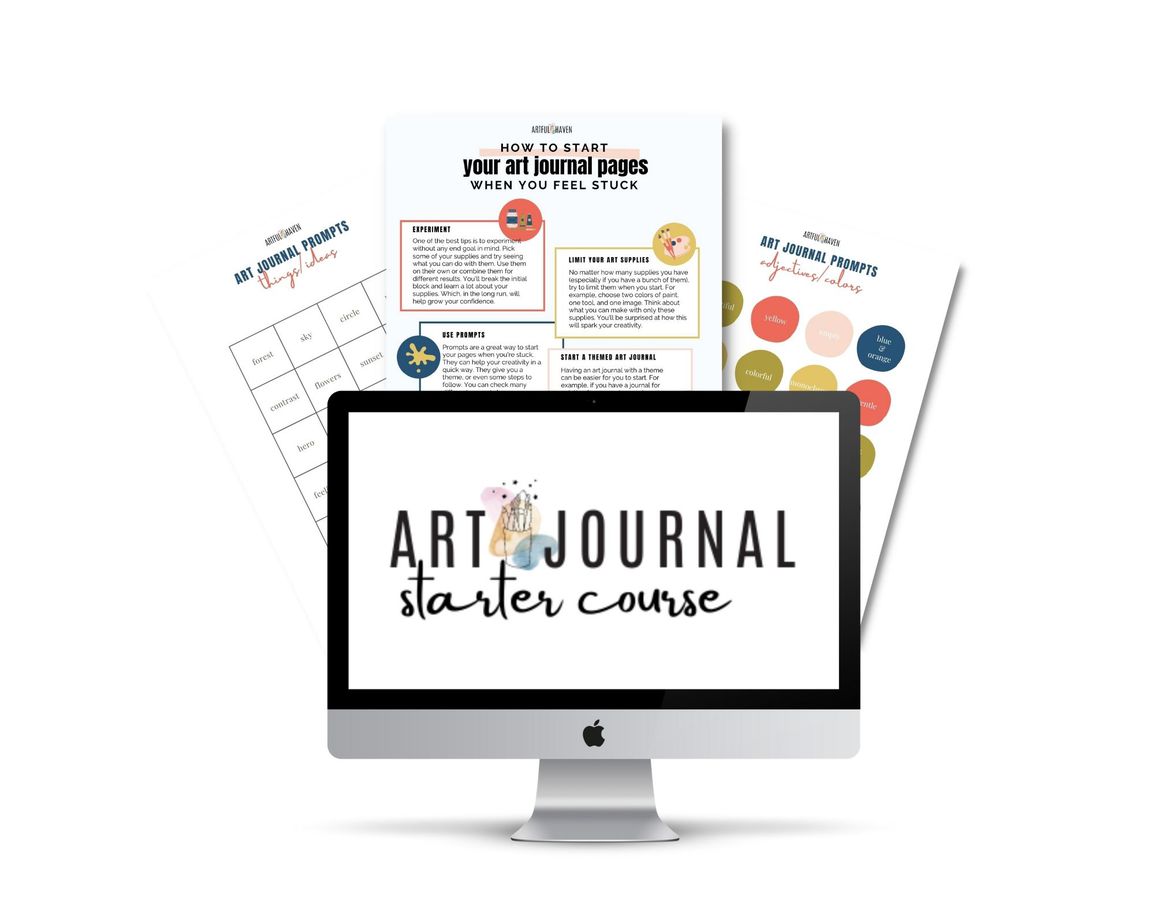9 Essential Tools For Applying Gesso To Paper – Guide For Art Journaling
So you have an art journal and you’re going to buy (or already bought) some gesso, but you wonder how to apply gesso to paper?
You can apply gesso with a few different tools, and each of them gives different results. Some of these tools are a gesso brush, a kitchen sponge, a make-up sponge, a brayer, etc.
Today, I’m going to list 9 tools for applying gesso to paper and show you how they look on paper and what effect you get with each tool.
Disclaimer: Some links in this post may be affiliate links. This means that if you purchase something through that link, I get a small commission, at no extra cost to you.
Tools for applying gesso to paper
These are the tools I’ve used to apply gesso to my art journal pages.
- A gesso brush
- A kitchen sponge
- A make-up sponge
- A brayer
- A piece of cardstock
- A palette knife
- A baby wipe
- A kitchen cloth
- Fingers
What I’d point out is that these tools can be divided into 2 groups, according to their effects: one that makes great texture and the other without texture.
Tools for applying gesso for texture
With these tools, I always get some kind of texture. Creating texture in your art journal is such fun and by experimenting, you can come up with new ideas and tools to use.
1. A brush for gesso
This one is by Marabu and it says that it’s specifically made for applying gesso. I’ve loved it so far because it’s easy to use and easily washable.
When you paint with it, it goes smoothly over the paper and applies the gesso evenly.
Also, it’s big enough so I can use it for larger areas in my big art journals.
This gesso brush makes a bit of texture which is seen in the thin lines. I hope you can see it in the photo below.
You can use any firm, big-sized brush for applying gesso.
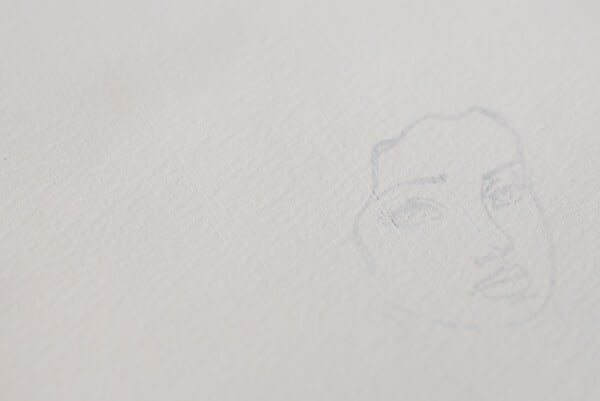
2. A kitchen sponge
This tool is one of my favorites for art journaling because it’s versatile and practical.
You can definitely use it with gesso and create a little or more texture.
If you use it as a brush and paint in straight strokes, you’ll have a similar effect to the gesso brush. The kitchen sponge makes thin lines when painting like this.
However, if you like more texture, take a different approach. Try applying gesso by dabbing it with a sponge on the paper. You’ll see small bubbles appearing on your paper. That’s awesome for texture.


3. Brayer
I discovered the brayer just two years ago. And I must tell you that it was a great discovery.
It’s an awesome choice if you want to get texture. Not just a little, but rich texture!
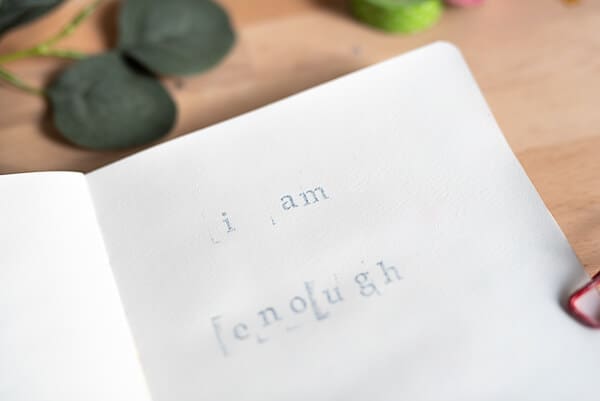
Also, it’s easy to use, and you gesso over the page quite quickly with it. Just remember to clean it right away after you’re finished using it. Gesso and acrylic paint are hard to clean off once they’re dry.
4. A palette knife
I mostly use a palette knife for applying texture paste. As far as gesso is concerned, not so much. Not that it’s not great. My main purpose for gesso is priming my pages, and it’s easier to do this with a brush or a sponge.
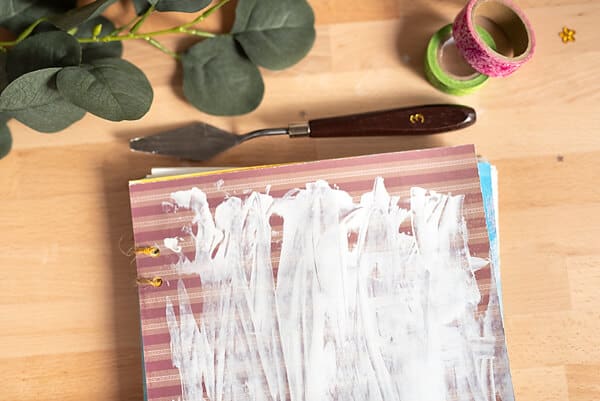
However, if you want to create more texture, you’ll definitely want to use a palette knife. Also, if you use this knife, you’ll get areas with thicker gesso. I only mention this because it’ll need more time to dry this way.
I love using the palette knife when I want to add some white areas on my page. Just like in the photo below.
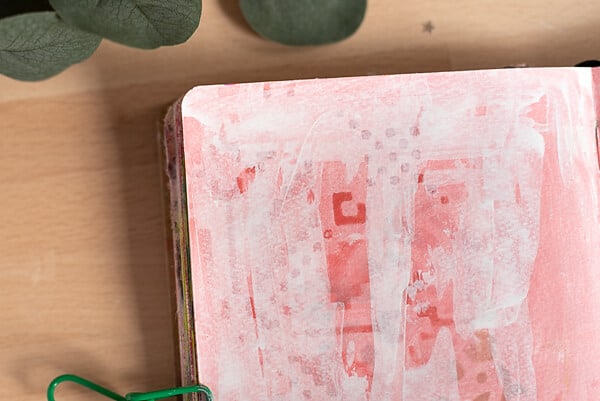
5. A piece of cardstock
You can use cardstock or an old credit card for the same effect.
When you apply gesso with cardstock, you get similar results to the palette knife. This tool gives you the texture and the strokes are completely visible.
Use this tool if you want to add some gesso here and there on the page. This technique can result in a grungy look.
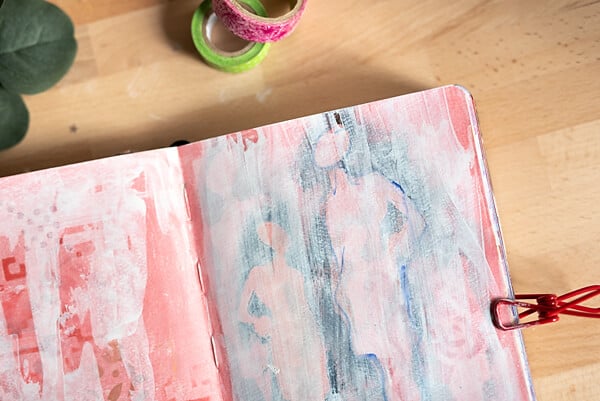
The right page: gesso applied with a piece of cardstock.
Tools for applying gesso for no or little texture
6. A make-up sponge
As you may have noticed by now, I use these sponges for art only, not my make-up. These sponges are so soft that I mostly use them for blending ink. So I thought, why not have that soft look with gesso?
And indeed, it delivered. When I apply gesso with a make-up sponge, it goes so smoothly over the paper that you can’t help but enjoy the process.
Because of its softness, it makes no texture. This is a perfect tool if you don’t want texture on your page.
This sponge is just a bit harder to wash, as opposed to the kitchen sponge.
7. use your fingers!
Do you like painting with your fingers? This can be so fun, and that’s why applying gesso like this also works like a charm.
Painting it with your fingers makes the gesso run smoothly over the paper.
I like putting some gesso here and there with my finger, usually to distress some parts of my page. Gesso looks a bit vintage this way, and I love it.
Here’s how I distressed some areas on this page:
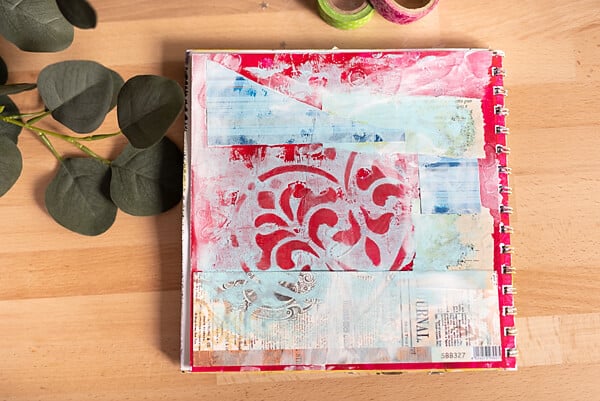
8. Baby wipe
This is a handy tool, although I try to use it as little as I can. I once went frenzy with the idea of using baby wipes in my art and realized that I use a lot of them for a project, and that’s too much paper to throw away.
Anyway, when you apply gesso with it, it paints soooo fine. What you get is a smooth page without any texture.
The wetness from the baby wipes waters gesso a bit and that’s why you get a thin layer of gesso on your paper.

Try using the wipe slowly and with light pressure, if you want a thin layer.
9. A kitchen cloth
For this purpose, I used a dusting cloth, with fine fibers. I wanted to test it dry and wet. To make it easier to use, I wrapped it around an old make-up sponge.


The cloth works smoothly, you can create a thin layer of gesso with it. It leaves stroke marks, so that can be counted as a bit of texture, but not much.

There wasn’t much difference in using a wet or dry cloth. The wet one just waters gesso down a bit, it depends how much you’ve soaked the cloth.
More ideas on tools for applying gesso
The point is you can use more than one tool for applying gesso to paper, it only depends on whether you want to create texture or not.
If the texture is your thing, you can use the brayer, kitchen sponge, gesso brush or a paintbrush, a palette knife, or a piece of cardboard.
For smooth surfaces, the good choices would be your fingers, a baby wipe, a make-up sponge, and a fine fiber cloth.
You can cover the whole page easily with some of these tools, like bigger brushes and kitchen sponges, brayer, or a baby wipe.
If you want to add gesso only to some parts, you could apply it with cardboard, a palette knife, or your fingers.
RELATED ARTICLES ABOUT GESSO AND OTHER ART SUPPLIES
8 Essential art journal supplies for beginners
7 Household items for art journaling
What Is Gesso And How To Use It In Art Journaling – A Beginner’s Guide

